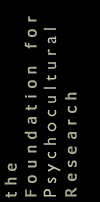|
ABSTRACTS |
The Eyes of the Pineapple: Fear in the Cambodian GenocideAlexander Hinton, PhD, Rutgers UniversityFrom April 1975 to January 1979, the Khmer Rouge undertook one of the most radical experiments in social engineering the world has ever seen. They immediately rusticated the cities, sending several million people to join the peasantry in the “front lines” of the “struggle” to rapidly increase agricultural production. Soon thereafter, they initiated a series of policies that radically transformed Cambodian society. Economic production, consumption, and ownership were collectivized. People were soon working long hours on sexually segregated work teams controlled by large cooperatives. Buddhism and other forms of religious worship were banned; such loyalties were now supposed to be transferred to the Revolutionary Organization, Ângkar. Family members were separated and the state began to arrange marriages. Money and markets were eliminated. Freedom of speech, communication, assembly, and movement were sharply curtailed. And, everyone was supposed to reshape their thoughts and actions in accordance with the Party line. If some people, wearied by a civil war that took as many as 600,000 lives, were initially enthusiastic about the new regime, the overall mood darkened in 1976 after economic failures and perceived power struggles convinced Pol Pot and his allies that there were “hidden enemies burrowing from within.” Fear and terror sharply increased. The Khmer Rouge security police created a network of prisons and interrogation centers that were filled with people who often disappeared at night. Spies crept about at night, listening beneath the bamboo slat of houses for treasonous talk. And, people were constantly watched for signs of subversion, which could be discerned from what one said, how hard one worked, or the “mistakes” one made. Even talking about the past could be interpreted as a crime. Cambodians responded to this situation in different ways, but most report being filled with fear and terror on a daily basis. Some built a wall of silence around themselves or became emotionally numb. Still others fell sick and died. In the end, up to two million of Cambodia’s eight million inhabitants – roughly a quarter of the population – perished from disease, overwork, illness, or execution under the Khmer Rouge regime. This essay will consider the insights about fear that can be gleaned from this genocidal period and its aftermaths. In particular, I will look at the structure, cultural, and ethnopsychological dimensions of fear during and after the Cambodian genocide. |

![The Foundation for Psychocultural Research [logo]](http://thefpr.org/images/gui/logo.gif)



